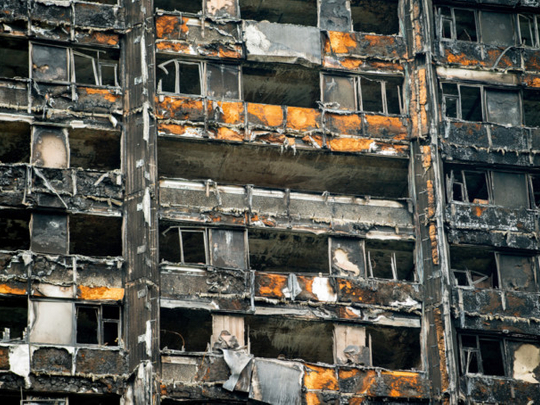
A fire that engulfed the Grenfell Tower, a residential building in London, has once again put building safety and fire hazards in the global spotlight. The fire has reportedly claimed nearly 100 lives, initial investigations showed a number of fire hazards, including building materials, in the building.
A common question after any blazing tower incident is, what started the fire? According to Eddie Arrowsmith, regional engineering manager responsible for Middle East operations at NICEIC, an independent voluntary regulatory body for electrical installation safety in the UK, electrical faults are the most common causes of fire across the GCC. “A study by Dubai Statistics Centre revealed 22 per cent of fires between 2011 and 2013 were caused by electrical faults like the one which started the fire at The Address Downtown Dubai on New Year’s Eve in 2015,” says Arrowsmith.
What is being done
Dubai’s new fire code is one of several steps taken by the government to ensure fire safety becomes top priority for all stakeholders involved in the construction and delivery of skyscrapers. The code mandates third-party independent inspections, strict accountability and fines for non-compliance of standards. Companies such as NICEIC train and certify electrical contractors to ensure knowledge and compliance with fire safety regulations.
According to Arrowsmith, there are different fire safety installations and certifications for commercial and residential buildings.
“Requirements are more stringent for buildings where occupants may not be familiar with what should be done in case of fire,” says Arrowsmith. “As an example, people coming into malls would not know where the fire exits are and what to do in case of a fire.”
Stringent regulations and stricter compliance norms are being set out to monitor buildings from the construction phase onwards, to ensure the right fire-retardant and fire-resistant materials are used.
Various firms help developers comply with these standards, offering services such as safety testing of exterior wall systems (curtain walling) of large buildings, fire containment systems in buildings and testing of materials for reaction to fire. “This will support the industry imbibe safer designs,” says Abhishek Chhabra, business development officer of Thomas Bell-Wright International Consultants, a Dubai-based firm providing independent testing, inspection and certification services for the building construction sector.
What residents can do
Since the majority of fires happen due to electrical mishaps, it is imperative for residents to build a basic knowledge and awareness about the subject, and ensure due diligence when selecting a contractor. Companies such as NICEIC hope to establish trained and certified contractors as the norm in the electrical industry, and put residents fears at rest with respect to electrical fire safety.
“Everyone registering with us is assessed on a regular basis to ensure high standards,” says Arrowsmith. “We will provide training, technical advice, certification and information on all the latest industry developments.”
Chhabra says bridging the knowledge gap for end-users and stakeholders is a global challenge that needs to be overcome to ensure greater fire safety. “Correct knowledge leads to informed decisions,” he says. “All of us users of buildings as well as the stakeholders need to work hard to close the knowledge gap that will help take correct decisions at the right time.”
There is also a need to minimise post-fire trauma to personal belongings, for which home insurance is a critical tool. Unfortunately, home insurance remains at record lows in Dubai. A survey of UAE residents in December conducted by a GCC-based insurance company revealed that only 9 per cent of UAE residents had home insurance.
While a lot of the fire safety considerations in a building are dependent on the developers and builders — the materials they use and the regulatory standards they adhere to — end users can play a big role by becoming aware of fire safety practices and, therefore, demanding materials and designs that are fire retardant.
Consumer demand patterns can sway the protocol for building designs and interiors. So the onus on residents and users of buildings is not only to enhance their awareness and seek certified contractors, but to also create a public demand for more fire-safe materials by moving from a price-conscious mindset to a quality-conscious approach.












